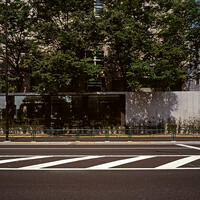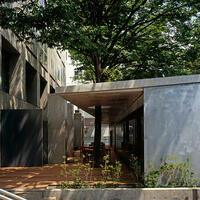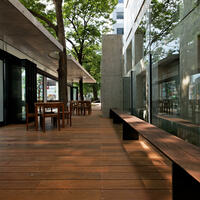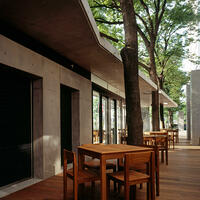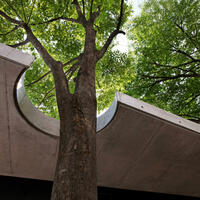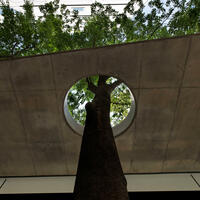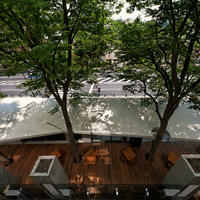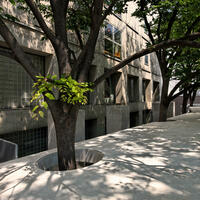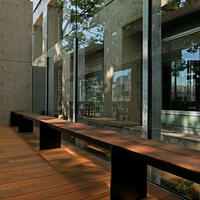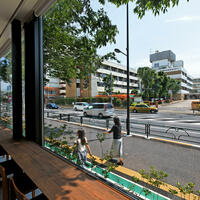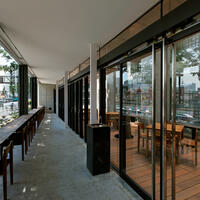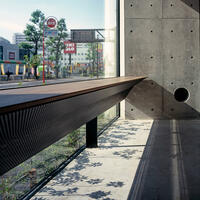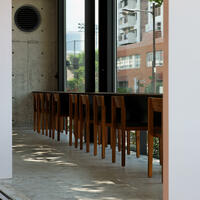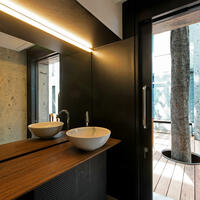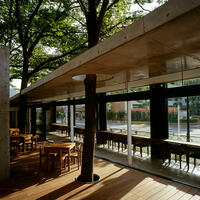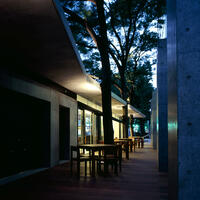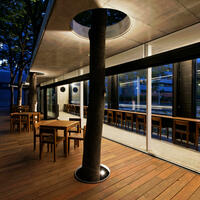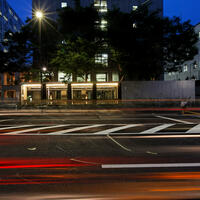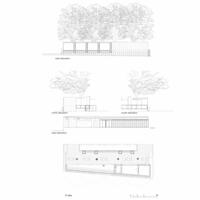Campus café, Waseda University
Shinjuku, Tokyo, JAPAN
An oasis with zelkova trees
| Architect | Furuya Nobuaki+NASCA |
|---|---|
| Usage | University (Restaurant) |
| Structure | RC |
| Size | 1F |
| Site area | 44,333.06㎡ |
| Area | 61.85㎡ |
| Completion | 2009.05 |
| Publishing | Shinkenchiku 2009.01 |
University is ultimately a place for people to encounter others. Therefore, it is not enough merely to have classrooms for lectures and connecting passageways. Professor Katsuo ANDO, who designed this campus about forty years ago, formulated a plan for a lecture hall alongside Meiji-dori, where all the students of the department could get together. Later, in order to accommodate the changing situation, such as the increase in the number of postgraduate students, research laboratory buildings such as the building no. 65 and no. 55 (Research Institute for Science and Engineering) were built, and with the opening of the Fukutoshin line underground in June, 2008, an exit was also newly constructed there, which became the new main entrance.
Although the original main entrance was located to the south side of the campus, the flow of people, in practice, is noticably greater to the west side (JR and Seibu Shinjuku Line) and to the east side (metro and bus service). It is natural to assume that people wish for entrances and exits to be relaxing places. Thus, what we had planned was a restaurant on the ground floor of building no. 63 and a cafe to the east side. The restaurant is connected to the gallery space facing the park, and this cafe is attached to the atrium of building no. 55. This is the place where architecture students gather to have their drawings critiqued. Both places face “open spaces”. In the little space between the existing building and the road stand some outstanding zelkova trees. As we wanted these trees to be a part of the architecture in design terms, parts of the building were designed accordingly and reserved for the tree trunks, requiring the kind of moulded forms which can only be executed in concrete. As a result, a narrow wedge-shaped indoor space looking out onto the road and an open-deck space in the shade of the trees emerged. By fully opening the glass folding doors, the trees, deck, and indoor spaces are all integrated. Taking a cue from the design of Sakurayama Elementary School in Takasaki, aluminum natural-ventilation windows, that we devised there, have been installed here as well.
Photos: Asakawa Satoshi



















